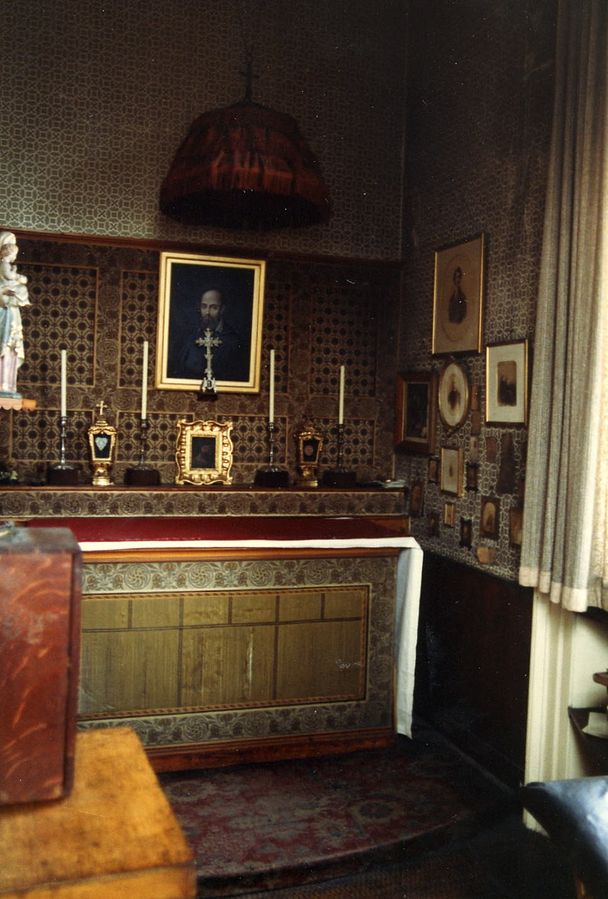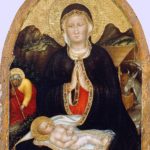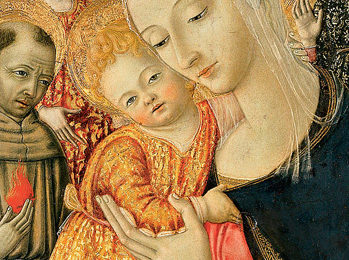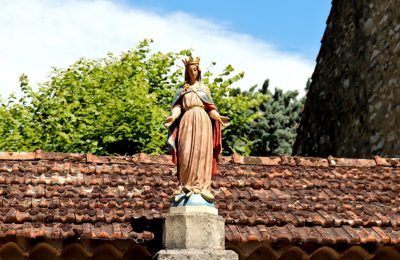St. John Henry Newman (b. 1801- d. 1890) was devoted to the Blessed Virgin Mary and her Psalter, the Holy Rosary. I recently read an essay written by Fr. Thomas McGovern on St. Newman’s devotion to Our Lady which is titled, Newman and Devotion to Our Lady. I found the section in the essay on Newman’s love of the Rosary to be quite beautiful. As we remain in the Great Novena to the Immaculate Conception, and are taking up our beads each day as requested by Our Lady at Fatima, it is apropos to read a bit on our Catholic ancestor, St. Newman, and his love of the Rosary as written by Fr. McGovern:
Due to failing sight, in the last years of his life Newman was unable to read the Breviary and substituted it with the Rosary. He had always been deeply attached to saying the daily Office, even as an Anglican, so we can imagine how much the Rosary came to mean for him when he could say that it more than made up for the Breviary. Indeed, the ageing Cardinal used to comment that the Rosary was the most beautiful of all devotions, and that it contained all in itself.
His understanding of the significance of the Rosary in Christian piety is best explained by himself:
‘And so in his mercy he has given us a revelation of himself by coming amongst us, to be one of ourselves, with all the relations and qualities of humanity, to gain us over. He came down from heaven and dwelt amongst us, and died for us. All these things are in the Creed, which contains the chief things that he has revealed to us about himself. Now the great power of the Rosary lies in this, that it makes the Creed into a prayer; of course the Creed is in some sense a prayer and a great act of homage to God; but the Rosary gives us the great truths of his life and death to meditate upon, and brings them nearer to our hearts. And so we contemplate all the great mysteries of his life and his birth in the manger; and so too the mysteries of his suffering and his glorified life. But even Christians, with all their knowledge of God, have usually more awe than love of him, and the special virtue of the Rosary lies in the special way in which it looks at these mysteries; for with all our thoughts of him are mingled thoughts of his Mother, and in the relations between Mother and Son we have set before us the Holy Family, the home in which God lived. Now the family is, evenly humanly considered, a sacred thing; how much more the family bound together by supernatural ties, and, above all, that in which God dwelt with his Blessed Mother. This is what I should most wish you to remember in future years’. [46]
When he was not engaged in writing or reading, he is remembered as most frequently having the Rosary in his hands. [47] (source)
“…for with all our thoughts of him are mingled thoughts of his Mother, and in the relations between Mother and Son we have set before us the Holy Family, the home in which God lived. Now the family is, evenly humanly considered, a sacred thing; how much more the family bound together by supernatural ties, and, above all, that in which God dwelt with his Blessed Mother.”
Which reminds me of the fact that the home in which God lived is our home (GK Chesterton, see here).
May you continue to have a beautiful Advent, preparing for the Great Event, Christmas.
~SCF
~Image: St. Newman’s private chapel, source. Note the portrait of St. Francis de Sales behind the Crucifix. I found this entry on a book site which details why the portrait was placed there: “Cardinal Newman (now Blessed John Henry Newman) was profoundly influenced by Francis de Sales. The phrase “Heart to Heart” was taken by Newman as his episcopal motto and occurs in a letter of Francis as well as a treatise on preaching and in Book VI of his masterpiece, “The Treatise on the Love of God.” When one enters the private chapel of Newman’s quarters in the Oratory in Birmingham, England (carefully and authentically preserved), one notices a large portrait of the Bishop of Geneva above the altar. Cardinal Newman looked at it each day as he offered Mass.” (source)






